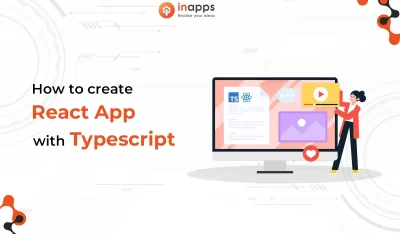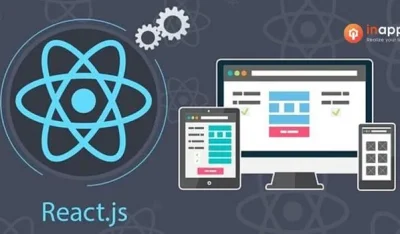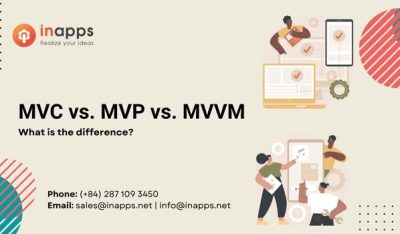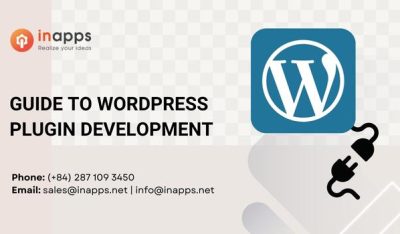- Home
- >
- Web Design & Development
- >
- Cost to Build an E-Commerce Marketplace in 2025
How much does it cost to build an E-Commerce Marketplace in 2022?
The introduction of the marketplace model of eCommerce was an evolutionary milestone in the eCommerce industry. The model allowed traditional entrepreneurs to tap into E-Commerce channels without investing in eCommerce store development, which made the ease of entry into the online market unprecedentedly viable for everyone.
Amazon, the biggest multi-vendor marketplace on the planet, is enough to explain how this model works and how it allows millions of third-party sellers to set up their storefronts and access their customer base without investing in proprietary website and infrastructure development.
If you want to develop a similar marketplace website and wondering how much it costs to build an eCommerce marketplace, this article will help you as a one-stop guide. We will discuss the fundamentals of how to start your own E-commerce Business in the marketplace model, different ways to build your marketplace, and their cost factors in detail.
Key Summary
- Overview: The article provides a detailed breakdown of the costs involved in building an e-commerce marketplace in 2022, including factors influencing expenses, as presented by InApps Technology.
- Key Points:
- Definition: An e-commerce marketplace is a platform connecting multiple vendors and buyers (e.g., Amazon, eBay), enabling product listings, transactions, and user management.
- Cost Factors:
- Platform Type:
- Custom Development: Fully tailored solution, higher cost.
- Pre-built Platforms: SaaS (Shopify, BigCommerce) or open-source (Magento, WooCommerce), lower initial cost.
- Features:
- Basic: Product listings, shopping cart, payment gateway.
- Advanced: Multi-vendor support, ratings/reviews, analytics dashboard, search with filters, chat support.
- Design:
- Custom UI/UX for branding vs. template-based designs.
- Mobile responsiveness and app development add costs.
- Development Team:
- In-house: Higher salaries in regions like the US/EU ($50-$150/hour).
- Offshore: Cost-effective in regions like Vietnam ($20-$50/hour, e.g., InApps).
- Freelancers: Variable quality, $10-$100/hour.
- Technology Stack:
- Frontend: React, Vue.js for dynamic interfaces.
- Backend: Node.js, Python (Django), or PHP (Laravel).
- Database: MongoDB, PostgreSQL for scalability.
- Cloud: AWS, Azure for hosting and storage.
- Third-Party Integrations:
- Payment gateways (Stripe, PayPal): Setup fees + transaction costs.
- Logistics (FedEx, DHL APIs): Integration and subscription fees.
- Marketing tools (Mailchimp, Google Analytics): Monthly subscriptions.
- Platform Type:
- Cost Breakdown:
- MVP (Minimum Viable Product):
- Basic features, template design, SaaS platform.
- Range: $10,000-$50,000 (offshore development, 2-4 months).
- Mid-Range Marketplace:
- Custom design, multi-vendor support, basic integrations.
- Range: $50,000-$150,000 (offshore, 4-8 months).
- Advanced Marketplace:
- Custom UI/UX, advanced features (AI recommendations, mobile app), robust integrations.
- Range: $150,000-$500,000+ (offshore, 8-12+ months).
- Ongoing Costs:
- Hosting: $100-$1,000/month (cloud services like AWS).
- Maintenance: $1,000-$5,000/month (bug fixes, updates).
- Marketing: $1,000-$10,000+/month (SEO, PPC, social media).
- Licensing/Subscriptions: $50-$500/month (SaaS platforms, plugins).
- MVP (Minimum Viable Product):
- Cost-Saving Tips:
- Start with an MVP to validate the market before scaling.
- Use open-source platforms or SaaS to reduce upfront costs.
- Leverage offshore development (e.g., Vietnam) for quality at lower rates.
- Prioritize essential features (e.g., payments, search) over nice-to-haves.
- Trends in 2022:
- Rise of headless commerce for flexible, API-driven architectures.
- Increased demand for mobile apps and social commerce integrations.
- AI-driven features (chatbots, personalization) add value but increase costs.
- Use Cases:
- Niche marketplaces for handmade goods or local services.
- B2B platforms connecting suppliers and businesses.
- Global marketplaces competing with Amazon or Etsy.
- Benefits:
- Scalable revenue through vendor commissions or subscriptions.
- Attracts diverse audiences with multi-vendor offerings.
- Leverages modern tech for seamless user experiences.
- Challenges:
- High initial investment for custom or advanced platforms.
- Ongoing maintenance and marketing costs can strain budgets.
- Competition from established marketplaces requires differentiation.
- Ensuring vendor onboarding and platform security.
- Conclusion: In 2022, building an e-commerce marketplace costs between $10,000 and $500,000+, depending on features, design, and development approach, as outlined by InApps Technology. Starting with an MVP, using offshore teams, and leveraging SaaS platforms can optimize costs while addressing competitive and operational challenges.
Factors That Influence The Cost To Build An ECommerce Marketplace

Majorly, three factors differentiate a marketplace development project from place to place and time to time:
- Nature of unique requirements
- Ability to invest upfront or in parts
- The business model of the marketplace
Nature Of Unique Requirements
What are your requirements for your marketplace website? There are two types of requirements in any E Commerce development project:
- You need common features that are present in currently functioning websites in the market.
- You need unique features that are not present in any popular website in the current market.
If your required features are common, there is a high chance that some ready-made multi-vendor marketplace software is present in the market with them already. All you need to do is test out the popular website builders from reputed brands and analyze which one fits more into your requirements.
However, if any of your required features are not present in any of the turnkey solutions in the market, go for the ones that are most close to your needs and analyze if you can customize any marketplace software solution to add those features. Now, you can achieve this customization by coding the features into the solution, or by finding a ready-made module, extension, plugin, or add-on that you can install into the marketplace software.
Nevertheless, if either of the above two options is out of the question, the only option that is left now is opting for development from scratch. You would need to contact a reliable software development company, submit your requirements to them, and wait for a quotation.
Which Ecommerce Development Option Is The Best?
I personally do not prefer development from scratch as there is hardly a marketplace feature that you can’t find in a ready-made marketplace software by default or through low-level customization. Moreover, the cost to build an eCommerce marketplace from scratch jumps exponentially in development from scratch as compared to using a marketplace website builder. We will compare the cost in the later parts of the article.
Ability To Invest Upfront Or In Parts
Even though you find perfect marketplace software as per your requirements, you might still find yourself if big dilemma choosing between two options:
- Should you invest upfront/ do you have money to invest upfront?
- Should you invest in parts/ can you do with a limited control?
Thing is, it depends on the types of solutions you choose. You can opt from two types of eCommerce solutions to build without development from scratch: Open-source eCommerce platforms and SaaS-based eCommerce platforms.
If you opt for open-source options, you will need to make some upfront investments to either purchase the source code or purchase different modules to customize the marketplace. However, if you can’t invest a big amount upfront, you can opt for a SaaS eCommerce platform, which asks for a monthly recurring fee for as long as you want to keep using the software.
Open-source solutions
There are two types of open-source eCommerce platforms.
Free open-source ECommerce platforms:
The source code of such open-source eCommerce platforms is available to download openly on the internet. You can download the source code, install it on a web server of your choice, and set up your eCommerce store with stock features. However, hardly any free eCommerce platform comes with marketplace features by default. You will need to purchase a marketplace module, extension, plugin, or add-on to make your stock eCommerce website a multi-vendor marketplace.
Popular free open-source ECommerce platforms: Magento community edition, PrestaShop, Open-cart, WooCommerce, Drupal Commerce, etc.
Premium open-source marketplace platforms:
Premium open-source solutions ask for a one-time payment to purchase the source code. Once you purchase the source code, you can install it on a web server and set up your marketplace website on the go. The difference between free and premium solutions is the later offers multi-vendor marketplace features by default. You need not purchase any additional modules or extensions.
Examples: Since they are proprietary, I shouldn’t give any specific example of the premium open-source solutions. Any premium solution that meets your unique requirements would be best. Most of the time, the vendors of such solutions sell the names of clone scripts such as Amazon clone script, Airbnb clone script, TaskRabbit clone script, Thumbtack clone script, which we will discuss in next cost factor- business model.
SaaS E-commerce solutions
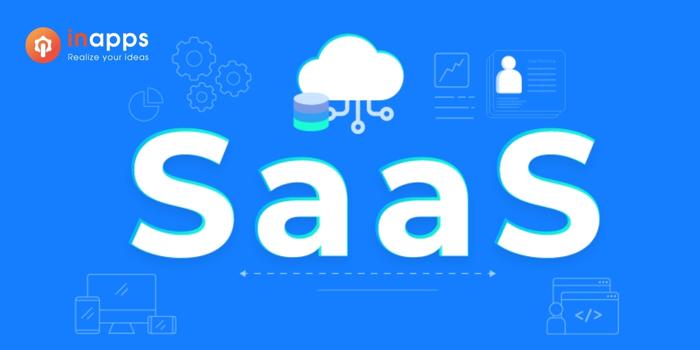
The SaaS eCommerce solutions are the ready-made options recurring fee instead of the upfront purchase cost. You can subscribe to any popular SaaS solution closest to your requirements. Based on the collection of features and other requirements, they will quote you a monthly fee. The best part is you need not worry about website hosting, website security, and payment methods, as SaaS vendors take care of all these under your monthly plan
The only limitation of this option is you don’t really own your marketplace and there is very limited customizability because you don’t get access to the source code. Eventually, you grow over-dependent on the SaaS vendor for every minute customization. Moreover, as your website grows, the monthly rental increases with it. In short, it’s no different than selling on Amazon, as you still rely on the third-party to run your marketplace business.
Which option is the best?
It depends on your investment budget and the kind of control you wish on your marketplace business. If you seek absolute control, can wait for some time, and afford an upfront investment, you should go for open-source solutions (free or premium). However, if you are a one-man army, can’t invest upfront, and have no issues giving your control to a vendor, SaaS could be a good option for you.
The business model of the marketplace
The choice of multivendor marketplace software depends massively on the kind of business model you are going to follow. Consequently, the choice affects the overall cost of your project.
For example, if you want to build a simple B2C or B2B multi-vendor marketplace to sell physical goods, you have all the options available at your disposal. You can choose free, premium, open-source, or SaaS options. However, if you are looking to build a rental marketplace or a P2P marketplace like eBay, you might not have all the options and the only option available in such a case would be to go for a premium open-source Airbnb clone script or an eBay clone script.
Cost Estimation of All the Options
Here we will go through a high-level breakdown of cost estimation to build a marketplace based on all the options we have discussed. Please note that irrespective of the options, we are considering that each of them will possess the following mandatory features of a simple marketplace website:
| User Registration | Ticket Management System |
Commission Management |
| User Management | Product Listing from Sellers |
Return and Refund Management |
| User Dashboard | Product Listing from Admin |
Stock Front-End Template |
| Seller Registration | Site Search Engine | |
| Seller Management | Virtual Shopping Cart | |
| Seller Dashboard | Reviews Management | |
| User Access Control | Integrated Payment Gateways |
|
| Authorization and Security | Shipping Managemen |
Note: The cost varies from place to place, from time to time, and base on requirements. Here we have considered only the essential factors. The cost of maintenance, which includes CDN, security patches, transaction fee, commissions, and taxes, etc. are not included in this estimation.
Free open-source eCommerce platform:
| Cost of stock source code: | $0 |
| Cost of Marketplace module: | |
| Magento: | $500-$800 |
| PrestaShop: | $400-$600 |
| OpenCart: | $500-$750 |
| WooCommerce: | $300-$500 |
| Cost of front-end template:: | $150-$1000 |
| Miscellaneous Modules: | $1000-$3000 |
| Web hosting(monthly): | $50-$100 |
| Maintenance: | $1000-$2000 |
Premium open-source/ clone script:
| Cost of stock-source code: | $700-$1000 |
| Cost of mobile applications: | $1300-$1500 |
| Cost of front-end customization: | $1000-$1500 |
| Miscellaneous customization: | $2000-$3000 |
| Web hosting(monthly): | $50-$100 |
| Maintenance | $1000-$2000 |
Software as a Service (SaaS):
| Monthly Rental: | $30-$2000 |
| Miscellaneous Fee | Variable |
| Design/Template(One-Time) | $1000-$5000 |
| Customization | N/A |
| Setup and Configuration(One-Time) | $0-$500 |
| Training(One-Time) | $0-$500 |
| Maintenance | N/A |
Development from scratch:
Development from scratch is a relative process and we cannot estimate the cost without an analysis of the actual set of requirements, preferred technology stack, cost of hourly development, and the number of resources required. However, the overall breakdown is similar to that of open-source solutions (free and premium), except the cost of source-code and the cost of customization will now act as a single cost of development from scratch.
If we take hourly development cost as low as $50 per hour, a team of 10 resources will take at least 400 hours of development, 100 hours of testing and bug fixing, which will approximate around $150,000. A similar kind of estimation will happen for developing iOS and Android mobile apps too, which makes the overall cost of the project not less than $300,000 for a medium-scale marketplace developed from scratch.
Don’t re-invent the wheel
Spending thousands of dollars to develop repetitive things from scratch is never a wise choice. The best options are using the multi-vendor marketplace software(open-source or SaaS) and focusing more on business development. Don’t re-invent the wheel but purchase the wheel from the market and invest in building a cart on it. Unless, you are going to introduce some unique business model, for a minute fraction of what you would invest in development from scratch, you can build a massive multi-vendor marketplace using ready-made solutions.
FAQs
How much does it cost to build a marketplace website?
Thus, you can see that it will take approximately 1368 hours to build an online marketplace. If we take the average rate of $50, the cost of building a marketplace website will start from $68,400.
In fact, the amount of development hours depends on the unique requirements of each project intended to build a marketplace site. Also, the final marketplace website development cost depends on the hourly rates of the software company you choose.
How much does it cost to develop a marketplace app?
An app with analytics, order tracking, and product recommendations will cost a minimum of $90,000. And if you want a complex app with a wide range of functionalities, including location sharing, virtual placement/try-on, voice search, etc., the marketplace app development cost may vary from $150,000–$280,000 and higher.
Final Words
We hope you liked this article, keep following InApps for more such content.
Looking to hire well-experienced professionals to build an e-commerce marketplace? Go to InApps right now to find yourself some of the most well-versed individuals in the industry.
InApps has eCommerce developers of many skill levels available to navigate your project need with brilliance and expertise.
[sociallocker id=”2721″]
List of Keywords users find our article on Google:
| marketplace app development cost |
| airbnb clone script |
| airbnb clone |
| prestashop modules |
| prestashop addon |
| addon prestashop |
| magento marketplace extension |
| marketplace development cost |
| cost of building a marketplace website |
| multi vendor marketplace saas |
| best airbnb clone script |
| opencart extensions |
| magento multi vendor |
| woocommerce marketplace |
| opencart mobile app |
| prestashop marketplace |
| open source marketplace |
| open source marketplace software |
| marketplace plugin woocommerce |
| magento 2 marketplace extension |
| multi vendor marketplace script |
| magento multi vendor extension |
| opencart modules |
| woocommerce multi vendor |
| cost to build a marketplace app |
| opencart multi vendor |
| magento shipping module |
| magento custom shipping module |
| magento multi vendor marketplace |
| prestashop module development |
| magento 2 multi vendor marketplace |
| open source ecommerce marketplace software |
| multi vendor shopping cart software |
| magento custom options extension |
| how much does it cost to build a marketplace website |
| store manager for prestashop |
| marketplace prestashop |
| prestashop mobile app |
| magento refund extension |
| magento b2b quote |
| magento b2b marketplace |
| magento b2b module |
| magento shipping extension |
| woocommerce mobile app builder |
| ebay clone script |
| amazon clone app development |
| amazon clone website |
| opencart payment gateway |
| amazon klon |
| netcost market |
| prestashop cart |
| marketplace magento |
| marketplace open source |
| free prestashop modules |
| magento recurring payments |
| multi vendor script |
| prestashop admin module |
| magento community patches |
| magento 2 refund request |
| b2b marketplace script |
| multi vendor ecommerce script |
| magento review module |
| amazon clone script |
| ebay clone |
| thumbtack clone |
| airbnb clone app |
| sitemap en prestashop |
| amazon clone |
| prestashop sitemap |
| sitemap prestashop |
| outsource drupal development |
| marketplace software development company |
| opencart marketplace |
| magento 2 quote module |
| taskrabbit logo |
| amazon module prestashop |
| magento 2 multi vendor marketplace extension |
| amazon marketplace prestashop |
| magento b2b marketplace extension |
| how much does it cost to develop a marketplace app |
| ebay marketplace prestashop |
| elearning marketplace |
| magento b2b extension |
| magento sitemap extension |
| prestashop payment gateway |
| magento 2 refund extension |
| prestashop payment gateways |
| prestashop shopping cart module |
| woocommerce b2b module |
| taskrabbit clone script |
| offshore drupal development |
| wawa reviews |
| module amazon marketplace prestashop |
| custom payment gateway opencart |
| prestashop home featured module |
| multivendor marketplace for magento 2 |
| how much to develop a marketplace app |
| magento marketplace module |
| magento 2 quote extension |
| multi vendor marketplace payment gateway |
| magento multi vendor marketplace extension |
| magento 2 quote get shipping method |
| magento email quote |
| marketplace in magento |
| opencart shipping software |
| opencart templates free |
| closest wawa |
| opencart multi store |
| develop prestashop module |
| prestashop search module |
| multi vendor marketplace builder |
| prestashop sales tax filing |
| best airbnb clone |
| magento shipping rates |
| delivery clone script |
| magento backend payment method |
| prestashop shipping module |
| magento custom shipping method |
| rental marketplace software |
| magento amazon extension |
| woocommerce multivendor |
| marketplace clone script |
| prestashop amazon plugin |
| best marketplace builder |
| module prestashop |
| prestashop module |
| amazon clone app |
| clone app development company |
| drupal module development |
| online marketplace software |
| marketplace website software |
| woocommerce payment gateway development |
| ecommerce product listing services |
| best marketplace platforms |
| ecomerce website builder |
| open cart marketplace |
| airbnb saigon |
| multivendedor opencart |
| trustpilot prestashop |
| opencart multi vendor extension |
| custom phone cases magento |
| best recommended prestashop modules |
| store manager for prestashop reviews |
| magento 2 frame extension |
| scratch solution amazon |
| woocommerce vendor dashboard |
| magento marketplace multi vendor module |
| magento refund module |
| multi vendor payment gateway |
| module amazon prestashop |
| netcost |
| x-cart to prestashop |
| multivendor digital products marketplace |
| module ebay prestashop |
| magento whatsapp share cart |
| module prestashop ebay |
| magento framer extension |
| responsive ebay listing templates |
| magento shipping module custom |
| developers prestashop |
| prestashop ebay module |
| shopping cart module prestashop |
| javascript sales tax sdk |
| variables prestashop |
| phunware stock |
| filing prestashop sales tax |
| magento 2 multiple shipping methods |
| prestashop amazon pay |
| ebay prestashop module |
| magento custom payment module |
| magento marketplace |
| linkedin clone script |
| opencart module development |
| woocommerce multi vendor marketplace |
| magento with marketplace |
| responsive ebay template |
| woo commerce marketplace |
| app prestashop |
| clone script software |
| modules prestashop |
| taskrabbit clone |
| prestashop b2b |
| top drupal development companies |
| best drupal development company |
| fintech app development cost |
| best drupal developers |
| software development cost estimation |
| saas fee air b&b |
| airbnb ho chi minh |
| netcost market jobs |
| linkedin ecommerce fundamentals |
| how much does thumbtack cost |
| opencart multi vendor extensions |
| prestashop marketplace module |
| how to build an ecommerce marketplace |
| prestashop module developers |
| mvp management maintenance software |
| opencart multivendor |
| opencart multi vendor module |
| multi vendor marketplace prestashop |
| sell on amazon opencart |
| prestashop module marketplace |
| best open source marketplace platform |
| module prestashop marketplace |
| netcost market hours |
| premium opencart templates |
| magento 2 marketplace module |
| magento file upload frontend |
| ebay prestashop |
| open cart templates |
| module marketplaces prestashop |
| amazon marketplace consultant |
| hire adobe xd designers |
| opencart extra charges to payment gateway |
| how to build a marketplace from scratch |
| amazon seller requirements |
| prestashop tax module |
| magento request a quote extension |
| amazon prestashop module |
| magento returns module |
| healthcare mobile app design templates |
| build ecommerce marketplace |
| opencart app |
| magento custom shipping method module |
| outsourced b2c order fulfillment solution |
| magento shopping cart template |
| prestashop amazon marketplace |
| prestashop amazon module |
| magento quote extension |
| multi vendor marketplace for magento |
| woocommerce multi vendor app |
| drupal commerce product options |
| marketplace extension for magento 2 |
| marketplace with woocommerce |
| prestashop shipping methods |
| drupal commerce shipping |
| free module prestashop |
| multi vendor ecommerce php script |
| multi vendor marketplace module |
| php b2b marketplace software |
| shipping extensions magento |
| prestashop free modules |
| prestashop web service update stock |
| magento shipping per product |
| magento shipping technology stack |
| design prestashop |
| marketplace search ui for ecommerce |
| builders marketplace |
| magento estimated delivery date extension |
| magento recurring payments extension |
| magento transactional email template variables |
| magento stock status |
| adobe xd style guide template |
| ebay module prestashop |
| multi vendor shipping |
| multi vendor woocommerce |
| woocommerce vendor marketplace |
| ebay mobile template |
| filing magento sales tax |
| how to install drupal commerce |
| prestashop plugin development |
| what is magento framework |
| b2c travel marketplace software |
| magento shopping cart |
| drupal webshop |
| ebay et prestashop |
| magento vs opencart vs prestashop vs woocommerce |
| multi-vendor shopping cart software |
| prestashop modulo whatsapp |
| woocommerce trustpilot |
| magento whatsapp share |
| taskrabbit reviews |
| wish clone script |
| cost to develop marketplace app |
| food delivery clone script |
| game clone script |
| marketplaces for magento |
| b2b extension magento |
| opencart module |
| variable prestashop |
| maintenance web site prestashop tours |
| prestashop stock module |
| prestashop et ebay |
| travel clone script |
| ecommerce android app source code |
| magento module |
| woo commerce multi vendor |
| multi vendor shopping cart |
| prestashop update module |
| consultant prestashop |
| magento refund |
| marketplace magento 2 extension |
| bug prestashop |
| prestashop ready |
| taskrabbit clone app |
| module prestashop gratuit |
| drupal modules |
| drupal custom module development |
| drupal backend developer |
| how to build a marketplace |
| multi vendor food delivery app |
| full stack digital commerce |
| ecommerce store set up |
| building estimator software |
| top ecommerce development companies |
| best ecommerce development company |
| food delivery app development cost |
| drupal development firm |
| how to build ecommerce website |
| magento development company |
| magento ecommerce development |
| magento development services |
| airbnb saas-fee |
| airbnb ho chi minh district 2 |
| saas fee airbnb |
| clone army customs shipping |
| opencart shipping extension |
| adobe xd feature request |
| opencart market |
| “turnkey solutions” |
| opencart free extensions |
| magento store turnkey development |
| adobe xd sitemap template |
| magento quote module |
| adobe xd ecommerce template |
| magento quotation module |
| shipping methods opencart |
| it var b2c software |
| prestashop admin app |
| prestashop multi vendor marketplace |
| thumbtack services near me |
| payment gateway opencart |
| prestashop mobile |
| ecommerce adobe xd |
| magento 2 quote set shipping amount |
| opencart payment modules |
| netcost market delivery |
| cart to quote magento |
| open cart template |
| prestashop product rental module |
| prestashop rental module |
| how much does it cost to start a marketplace |
| mobile responsive ebay template |
| prestashop vs prestashop ready |
| magento b2b install |
| netcost market near me |
| woocommerce multi vendor shipping |
| facebook opencart |
| how to build a platform cart |
| magento request for quote module extension |
| multi vendor marketplace for magento 2 |
| prestashop market place |
| prestashop template design |
| ats infrastructure ltd jobs |
| cost to build online marketplace |
| how much does it cost to build an online marketplace |
| magento 2 quote system |
| multivendor ecommerce website price |
| open source marketplace framework |
| template ecommerce prestashop |
| ecommerce product listing jobs |
| prestashop payment module development |
| home delivery software opencart |
| how to connect facebook leads to prestashop |
| magento email quote extension |
| multi vendor mobile app |
| woocommerce to facebook marketplace |
| drupal commerce core |
| magento quote to cart |
| adobe commerce marketplace |
| multi vendor marketplace magento |
| opencart extension |
| magento 2 quote extension free |
| multi vendor marketplace magento 2 |
| windowssdk |
| magento quotation extension |
| module marketplace prestashop |
| multi vendor marketplace mobile app |
| how to integrate payment gateway in opencart |
| magento multi vendor module |
| multi seller magento extension |
| multi vendor magento extension |
| prestashop custom payment module |
| entry level ecommerce jobs |
| magento b2b professional extension |
| marketplace in magento 2 |
| marketplace for magento |
| multi vendor magento |
| multivendor marketplace solution for woocommerce |
| prestashop quotation module |
| shipping extensions for magento |
| woocommerce product vendors frontend |
| add to quote magento |
| prestashop jobs |
| server development cost |
| build prestashop |
| custom payment method opencart |
| drupal commerce templates |
| drupal module development training |
| ecommerce website ux case study |
| magento sales representative |
| netcost delivery |
| opencart ios app |
| opencart templates for online shopping |
| magento 2 multi vendor module |
| magento custom email template variables |
| free templates prestashop |
| js sales tax sdk |
| magento commerce recruitment |
| magento plugin marketplace |
| magento quotation |
| nodejs marketplace open source |
| opencart mobile app builder |
| prestashop b2b marketplace |
| saas clone scripts |
| xd dashboard templates free |
| it var ecommerce software |
| opencart android app |
| quotation module prestashop |
| woocommerce seller dashboard |
| xd to magento |
| drupal commerce search |
| free modules prestashop |
| free prestashop modules download |
| magento custom registration fields |
| magento email templates variables |
| prestashop free template |
| thumbtack pricing guide |
| buildersmarketplace |
| calculate shipping cost magento 2 |
| flat rate shipping woocommerce |
| magento sdk |
| chi you clone |
| magento request a quote |
| magento si |
| module e transaction prestashop |
| prestashop ebay module free |
| recurring payments magento |
| custom registration fields magento |
| drupal vs adobe experience manager |
| foodelivery clone script |
| it var b2c solutions |
| magento product return extension |
| magento quote |
| opencart amazon |
| opencart payment module development |
| prestashop address fields |
| prestashop b2c |
| prestashop module amazon |
| trustpilot woocommerce plugin |
| drupal 7 commerce |
| ecommerce marketplace script |
| free prestashop module |
| magento multivendor |
| magento transactional email template files |
| module prestashop amazon |
| moduły opencart |
| opencart plugin development |
| premium ebay templates |
| prestashop module ebay |
| site e commerce prestashop |
| add fields in magento 2 admin in product edit |
| adobe xd design templates |
| adobe xd sitemap |
| best magento multi vendor marketplace |
| drupal commerce payment |
| how to file prestashop sales tax |
| magento free shipping extension |
| marketplace multi vendor module |
| prestashop adds |
| woocommerce marketplace plugin |
| builders marketplace reviews |
| closest wawa from here |
| magento qa |
| marketplace vs code |
| multi vendor app |
| prestashop customization |
| prestashop design |
| prestashop variables |
| real estate clone script |
| woocommerce b2b solution |
| custom payment method prestashop |
| download magento patches |
| ecommerce clone |
| ecommerce clone script |
| magento custom stock status |
| magento quotes |
| magento shipping plugin |
| open source ecommerce marketplace |
| opencart order status |
| prestashop add on module |
| prestashop add payment method |
| prestashop build |
| prestashop security module |
| react amazon clone |
| wawa rentals |
| woocommerce mobile app android |
| addons presta |
| how much does it cost to start a marketplace business |
| magento 2 mobile app builder |
| magento 2 multiple flat rate shipping |
| magento product custom options extension |
| magento storefront |
| opencart product upload services |
| prestashop app store |
| windows sdk addon |
| add on prestashop |
| airbnb clone react |
| amazon prestashop |
| amazon turnkey websites for sale |
| cdesigner prestashop |
| drupal commerce 7 |
| drupal commerce multi store |
| magento cdn amazon |
| magento community templates |
| magento marketplace extensions |
| magento shipping cost |
| marketplace woocommerce |
| prestashop dashboard module |
| prestashop payment gateway options |
| short-term rental saas |
| woocommerce multivendor marketplace |
| amazon pay magento |
| best marketplace script |
| best prestashop modules |
| best shipping for prestashop |
| build your own clone |
| how to setup payment gateway in prestashop |
| magento 2 extension marketplace |
| magento delivery extension |
| magento extensions marketplace |
| magento send email without template |
| multi vendor rental marketplace |
| prestashop app |
| prestashop refund module |
| sell phone case woocommerce |
| ux case study ecommerce |
| variable shipping rates woocommerce |
| vendor dashboard template |
| woocommerce multi vendor plugin |
| woocommerce rental |
| drupal 7 commerce module |
| ecommerce website builder script |
| magento ce |
| magento development in vietnam |
| magento refund online |
| module de paiement prestashop |
| multi vendor marketplace php script |
| opencart recurring payments |
| premium magento 2 extensions |
| prestashop app mobile |
| prestashop ebay |
| prestashop faq |
| prestashop free ecommerce |
| prestashop product customization module |
| prestashop taxes |
| product input fields for woocommerce |
| thumbtack management team |
| woocommerce seller |
| app clone scripts |
| b2b commerce storefront |
| b2c prestashop |
| drupal consultant rates |
| drupal qa |
| drupal vietnam |
| how to build marketplace website magento |
| magento b2b plugin |
| magento trustpilot |
| marketplace builder software |
| prestashop b2b module |
| template gratuit prestashop |
| woocommerce multi-vendor |
| best payment gateway for prestashop |
| ebay seller email templates |
| it var b2c application |
| magento 2 quote |
| magento b2b extension free |
| opencart training |
| software development quotation template free |
| website marketplace script |
| woocommerce multiple vendors |
| woocommerce plugin marketplace |
| magento email template variables |
| prestashop add |
| b2b trustpilot |
| multi vendor marketplace open source |
| food delivery app clone |
| net core ecommerce |
| no code marketplace |
| magento open source b2b |
| multivendor website |
| readymade app development app |
| top drupal developers |
| ecommerce prestashop |
| how to make a multi vendor website |
| best ecommerce development companies |
| opencart developer |
| drupal ecommerce development |
| ecommerce app cost |
| hosting prestashop |
| best opencart hosting |
| build ecommerce website |
| opencart hosting |
| ecommerce website testing |
| woocommerce app development |
| b2b ecommerce solutions |
| commerce mobile app |
| e commerce app development company |
| b2b ecommerce examples |
| best b2b ecommerce platform |
| best b2b ecommerce websites |
| magento web development company |
| ecommerce application development |
| ecommerce platforms |
| magento ecommerce developers |
| magento ecommerce development company |
| e-commerce website development |
| woocommerce development services |
| ecommerce solutions |
| ecommerce development company |
| magento web development services |
| magento website development company |
| ecommerce web development company |
[/sociallocker]
Let’s create the next big thing together!
Coming together is a beginning. Keeping together is progress. Working together is success.







